Quick Pickled Vegetables might just be the best “no nonsense” way to clean out your fridge. They take barely any time, almost no effort, and the payoff is major.
What are Quick Pickled Vegetables?
Quick pickles, or refrigerator pickles, are the result of vegetables or fruit that have been packed in hot brine and left to sit for at least a few hours in the fridge. They are not fermented, and they don’t cook as much as with traditional canning methods so they retain some good crunch. Quick pickling is a perfect way to go if you have a small amount of veggies to deal with, and when you’re just not interested in setting up an elaborate canning production. Learning how to make quick pickles is also a great way to extend the life of some things in your fridge that are almost on their way to the compost bin.
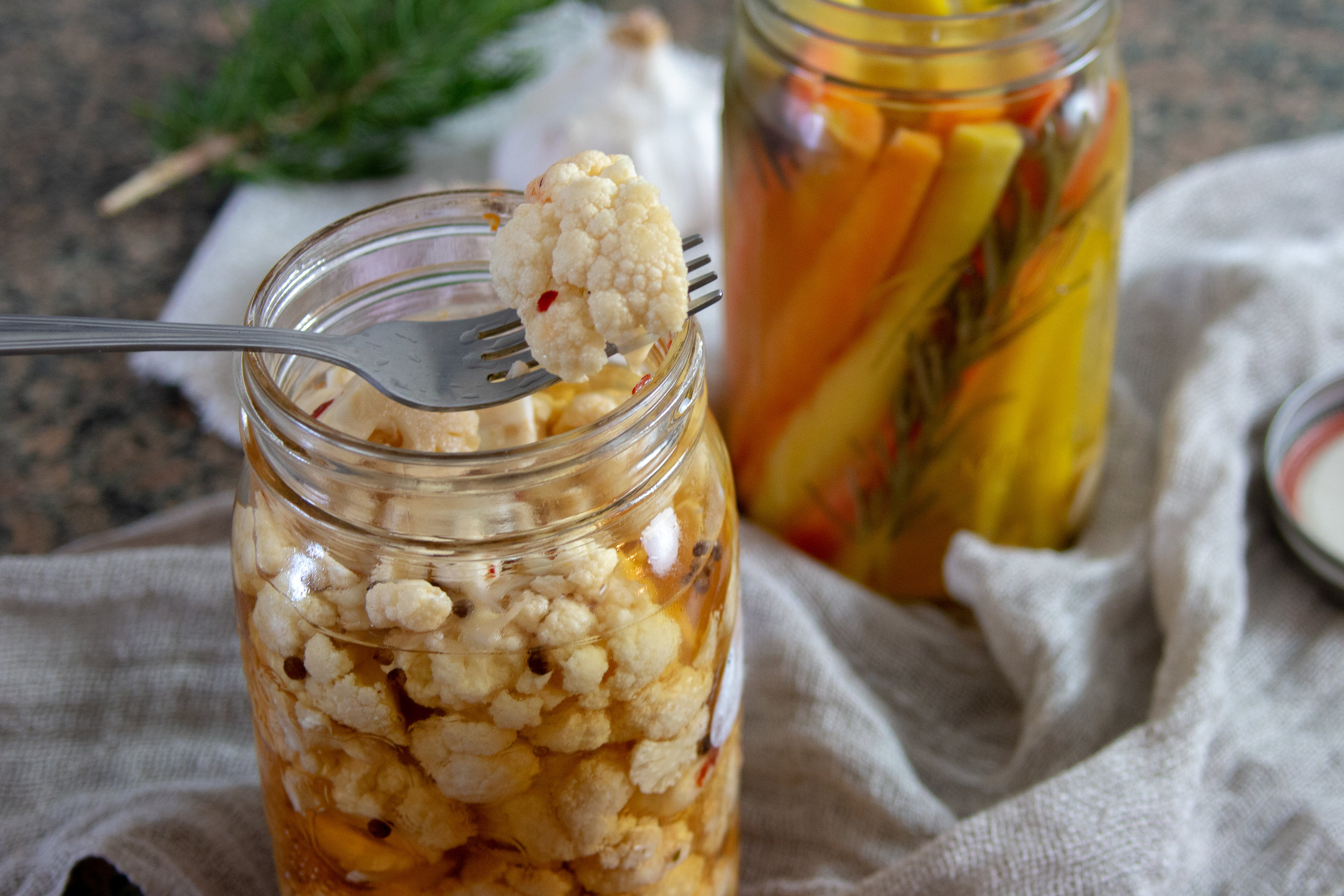
A healthy convenient snack
I am a lifelong addict of all things sour and salty. It’s so nice to have something pickled in the fridge at all times for an instant flavour punch. I stick these pickled veggies on sandwiches, add them to salads, and snack on them the second I walk in the door. Growing up, I was always munching on dill pickles from the jar. I still buy store-bought pickles all the time, but there’s something really nice about having your own homemade pickles on hand.
Pickled veggies are a great thing to eat alongside your otherwise veggie-less dinners. You know those nights when all you want to eat is buttered noodles? A few homemade spicy pickles on the side make you feel good about getting some veggies in.
A non-recipe recipe
There are tons of different refrigerator pickle recipes out there, and they vary quite a bit. The truth is though, you don’t really need a recipe. It’s more about following a general formula. The rest is up to your creativity and your current pantry contents.
The formula for quick pickle making is simple. There needs to be a good amount of acidity, in the form of vinegar, and a good amount of salt. I go with equal parts vinegar and water, and 1 Tbsp of salt for every cup of vinegar. Everything else beyond that is just extra, however I always add brown sugar to mine because I love how it balances out the sharpness of the vinegar.

How to make quick pickled vegetables
Step 1: Make the brine
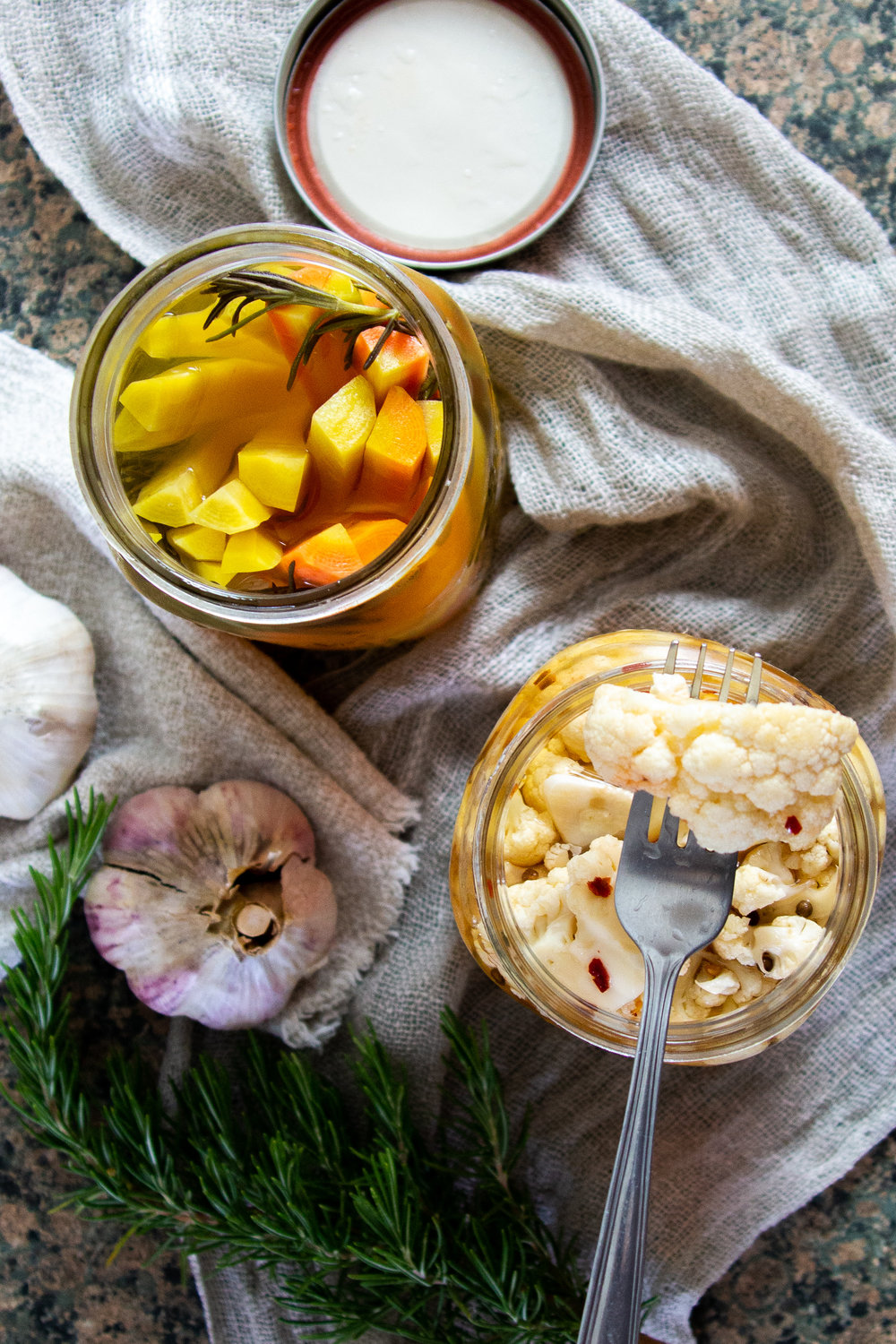
This basic ratio can be added to and jazzed up in a number of ways.
- 250ml water
- 250ml vinegar (I like malt or apple cider, but other ones work too)
- 1 Tbsp salt
- 2 Tbsp brown sugar
Combine these ingredients in a pot, bring to a boil, and simmer until the sugar is dissolved. Taste the brine before you pour it over the veggies to make sure the vinegar sugar ratio is how you want it. If you’re going for more of a bread and butter pickles vibe, you’ll want to add more sugar.
To jazz up the brine you can add any number of fresh herbs, dried spices, fresh garlic, ginger, pickling spice, mustard seeds, fresh dill, crushed red pepper flakes, the list goes on. Play around with different combinations to make these pickles your own.
In this batch I used bay leaves, red pepper flakes, garlic, and rosemary. I also made some spicy refrigerator pickles with a half cauliflower that had been kicking around for awhile.
2. Selecting and preparing the vegetables for quick pickling
Your veggies can be sliced, diced, quartered, or minced. The smaller you cut them, the more of the brine they will absorb, so keep that in mind. In terms of what veggies to use, it’s really up to you. The rule of thumb is, if you’d be willing to eat it raw, it’s a contender.
Some good ones to start with: Green beans, carrot sticks, sliced cucumbers whole asparagus spears, red onions, celery, quartered radishes, sliced beets.
3. Making the quick pickles
This part is easy. All you have to do is:
- Stuff the veggies into Mason jars – you can pack them pretty tightly because they’ll wilt down slightly in the fridge.
- Pour the boiling hot brine over the veggies until they are completely covered. It’s your choice if you want to strain the bits out before pouring into the jar.
- Close the lid and let the jar of veggies sit on the counter for 20 minutes or so before popping them in the fridge overnight.
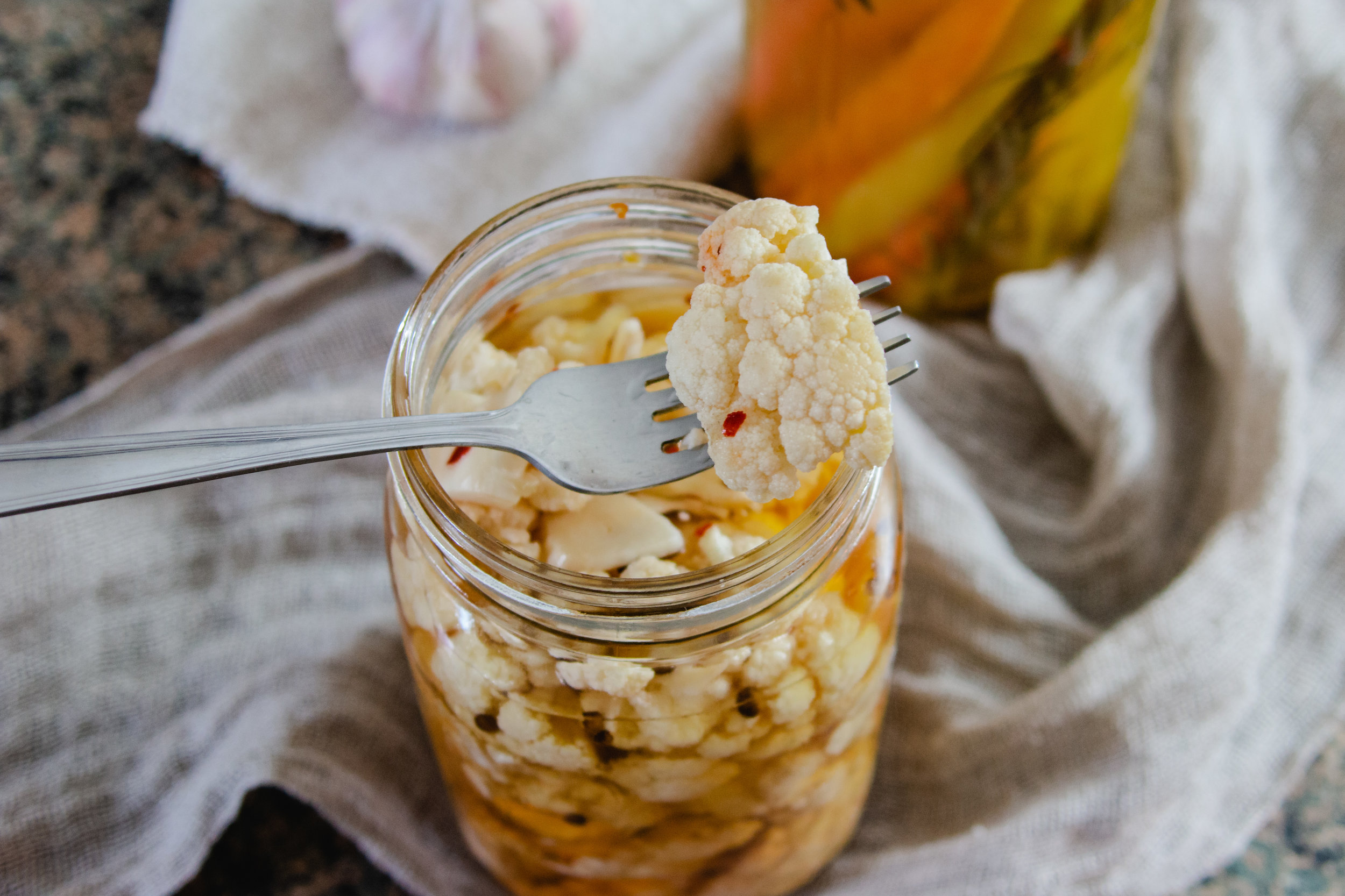
Quick pickles will keep in the fridge for at least a month and probably many months, but it’s very unlikely that they will stick around that long. They’re an addictive little snack!
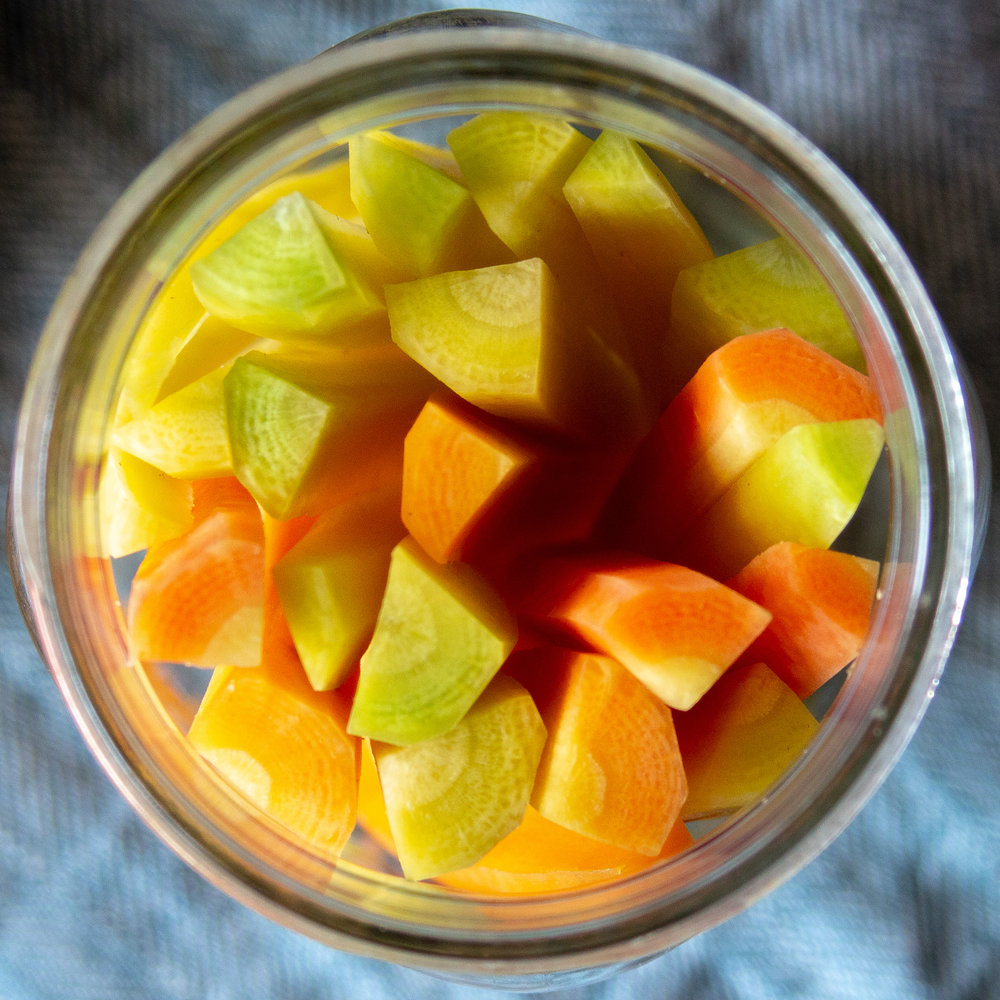
How to eat your Quick Pickled Vegetables
I love a quick pickle straight from the fridge—no supporting characters required. But they’re also great when chopped up and added to a wrap or sandwich (like my smashed chickpea sandwich), thrown into salads, or enjoyed on the side of a warm cooked dinner—like my Easy Lentil and Broccoli Curry.
Are you a pickle enthusiast too? I’d love to hear your success stories. I’d also love to hear about your pickling adventures gone wrong. Comment below or join me on Instagram to talk it out!
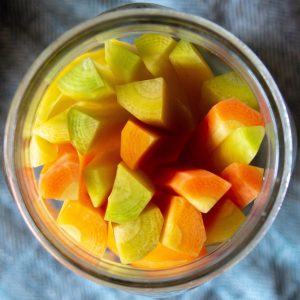
Quick Pickled Vegetables
Ingredients
- 250 ml 250ml water
- 250 ml malt vinegar or apple cider vinegar
- 1 tablespoon salt
- 2 tablespoons brown sugar
- 500 grams fresh vegetables or fruit
- 1 tablespoon whole spices or herbs, such as bay leaves and peppercorns
Instructions
- Combine the water, vinegar, salt, brown sugar, and spices in a pot. Bring to a boil, and simmer until the sugar is dissolved.
- Pack the vegetables into a clean glass jar. Pour the hot brine over the vegetables and allow the mixture to cool before putting the lid on and placing it in the fridge.

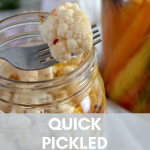
Hey I was searching for reliable recipe for quick pickle and I naturally turned to howtomakedinner.com. However, I have one question: what should be the acidity of the vinegar used? In Poland destilled vinegar is 10% so it’s heavy stuff but other vinegars are lighter.
Hi Konrad! Sorry it took so long to respond, I haven’t logged in in awhile! That’s such a good question. I’ve made these pickles with quite a few different vinegars and they’ve always worked out. The ones I use the most are apple cider, and malt vinegar, both sitting at around the 5% mark. Wow, 10% is a real kicker! In your case I’d suggest cutting it with bit of water and adding a little more sugar to balance things out. And if you find a good 5-6% apple cider vinegar, give it a go.